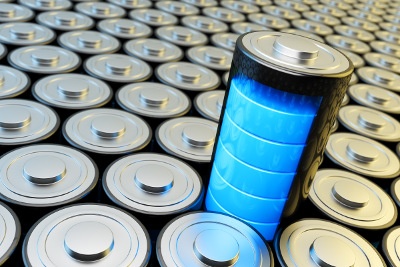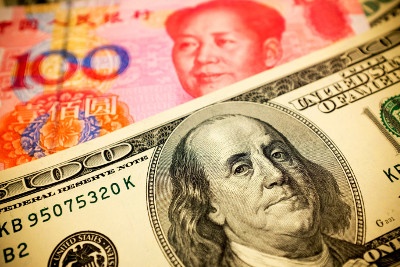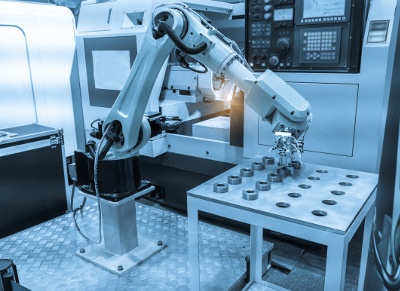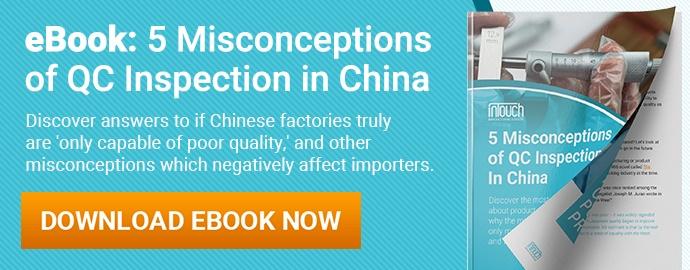Each Sunday, we publish a list of top articles and other content related to manufacturing in areas like quality control, product development, supply chain management, sourcing, auditing, and law.
1. Decade-lasting batteries powering operations for years to come
As a kid, I would always get frustrated when my Gameboy (a handheld video game player) ran out of power after playing on it for hours on end. All the milestones for whatever game I was playing simply evaporated.  But this problem isn’t exclusive to just playing video games. There are situations every day where losing battery power can mean the difference between progressing or stopping failure or success, or life or death.
But this problem isn’t exclusive to just playing video games. There are situations every day where losing battery power can mean the difference between progressing or stopping failure or success, or life or death.
Now, however, thanks to the research of the bright men and women at the Harvard John A. Paulson School of Engineering and Applied Sciences, people soon might not have to face the issue I once did when playing my Gameboy. And, of course, their research is also a great boon for more important battery-equipped devices, like flashlights, defibrillators, cars, and more.
But what exactly did the researchers do? Specifically, they,
…have developed a new flow battery that stores energy in organic molecules dissolved in neutral pH water. This new chemistry allows for a non-toxic, non-corrosive battery with an exceptionally long lifetime and offers the potential to significantly decrease the costs of production.
This exciting new technology probably won’t have applications for small devices for a while. It needs time to proliferate and be commercialized. In the meantime, the technology will likely first be used to help reduce the cost of energy supplied by renewable sources like solar and wind. But in the future, you might just have a flow battery at home, in your business, or at a factory powering your car, cellphone, or backup generator.
To learn how this development in battery technology works, check out the full article in the link below:
Long-lasting Flow Battery Could Run for More than a Decade with Minimum Upkeep – Leah Burrows, TechXplore
2. Addressing risk in your supply chain
When looking at an everyday item, like sunglasses, you might not realize everything that went into making it and getting it to you. The frame, bolts, and lenses could’ve all come from different suppliers to make the final product. And that’s not even mentioning who supplied the raw materials to make those parts.
At any stage in the production of sunglasses for any one of these components, there’s supply chain risk, and this concept applies to just about any product on the market. Simply “not knowing” about these risks is often not good enough to defend your brand and business from the fallout of bad management.
For example, the author mentions the tragic Rana Plaza collapse in 2013, which serves as a constant and unfortunate reminder of the importance of supply chain awareness. Many brands didn’t even know their goods were made in conditions dangerous enough to eventually claim the lives of 1,130 innocent workers. But that didn’t protect companies from consumer backlash.
To reduce risk, the author says:
Central to reducing the risk of being exposed to such [supply chain] challenges is having sight of who suppliers are and where they are located.
It’s hard to address a problem if you aren’t even aware of it. This wisdom, in addition to the rest of what the author says, is definitely worth a read to make sure your supply chain is free of the risks that can lead to disaster.
To learn more about solutions to identify risk in your supply chain and address it, check out the full article in the link below:
Can You Identify Risk in Your Supply Chain? – Stefan Geib, Quality Digest
3. Stats on the US-China trade deficit
When discussing trade-related affairs, you need to have accurate information. Numbers pulled from thin air are of no use – you need reliable data.
 That’s where a recent report from the Economic Policy Institute comes into play. The report goes into great detail to document the trade relationship between the United States and China and relies on a mix of government and think tank data.
That’s where a recent report from the Economic Policy Institute comes into play. The report goes into great detail to document the trade relationship between the United States and China and relies on a mix of government and think tank data.
A few key excerpts include:
- The U.S. goods trade deficit with China rose from $83.0 billion in 2001 to $367.2 billion in 2015, an increase of $284.1 billion
- Due to the trade deficit with China, 3.4 million jobs were lost between 2001 and 2015
- The United States net international investment position (NIIP) declined from -$2.3 trillion in 2001, before China joined the WTO, to $-7.2 trillion in 2015
What do you think about the trade deficit – is it overblown and overemphasized or not given enough attention? Let us know in the comments section at the bottom of the page.
You need proper context to make sense of these data. And the best way to get that context is to check out the full article in the link below and check out information from the Office of the U.S. Trade Representative, among others:
EPI Report Claims US-China Trade Deficit Cost 3.4 Million Jobs – Michele Nash-Hoff, IndustryWeek
4. Curtailing the copycats
Imagine you’ve been working tirelessly for months on a nifty gadget. There’s nothing like it on the market yet, and you’re poised to make a sizable profit, so long as everything goes according to plan. Unfortunately, in some cases, entrepreneurs and established companies will spend their precious time creating a new product, only to find out it’s been copied by a Chinese factory and is already being sold.
For entrepreneurs, their product is typically copied from a successful Kickstarter or GoFundMe campaign. For companies, their product might be copied from one of their own factories or a competitor that gained access to proprietary designs. Usually, however, this problem plagues entrepreneurs the most.
The author makes the point that non-disclosure agreements (NDAs) typically don’t cut it because they “don’t protect you as much as you think”. Instead, the author recommends following the advice of the internationally recognized lawyer Dan Harris, which is to use a NNN agreement. This type of contract contains non-disclosure, non-circumvention, and non-competition clauses. And it’s these extra provisions, in addition to everything else the article recommends, that might mean the difference between your business thriving or dying.
To learn more about how to protect your product from being copied in China, check out the full article in the link below:
50 Shades of Fake: How to Protect Your Product from Copycats in China – Benjamin Joffe, Forbes
5. A step closer to automated assembly
Rising labor costs are a major reason that manufacturers everywhere are keen to automate production. Case and point: China.
 In this article, the author references China, where labor costs shot up from 2005 to 2015 by 450%. In dollars per hour terms, that means a change from $0.7 to $3.3. It may not seem like much, but the difference adds up. Combatting this price increase means turning to more sophisticated technologies like automated robots, but a common problem is that they can’t always be used for man-made products.
In this article, the author references China, where labor costs shot up from 2005 to 2015 by 450%. In dollars per hour terms, that means a change from $0.7 to $3.3. It may not seem like much, but the difference adds up. Combatting this price increase means turning to more sophisticated technologies like automated robots, but a common problem is that they can’t always be used for man-made products.
Enter the force and torque sensors made by ATI Industrial Automation. They’re capable of sensing “torque and side loads along all six axes”. With the extra precision offered by these sensors, a whole range of new applications (and automation) is possible. Doctors can rely on robots equipped with sensors to perform operations. Machines can place delicate components in products that previously required a human worker. And that’s just the beginning.
In the video below, you can listen to customers of ATI talk about the sensors. You can also get a glimpse of machines using them in action:
To read more about these sensors, check out the full article in the link below:
Building a Robot Army? Use the Force (Sensor) – John Hitch, Industry Week
We’re constantly scanning the web for top manufacturing stories and news. If you’d like to submit an article for consideration for our weekly Best in Manufacturing, send us a message and let us know.







